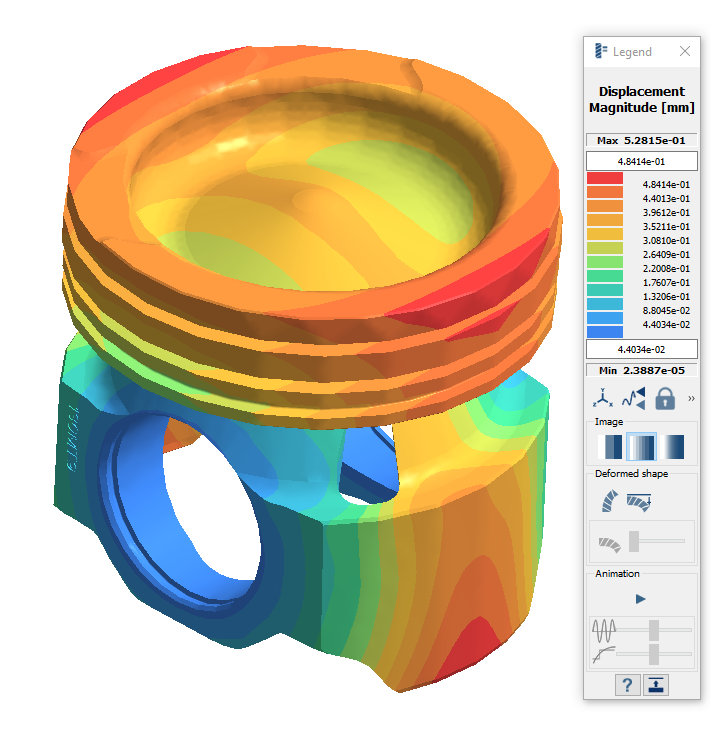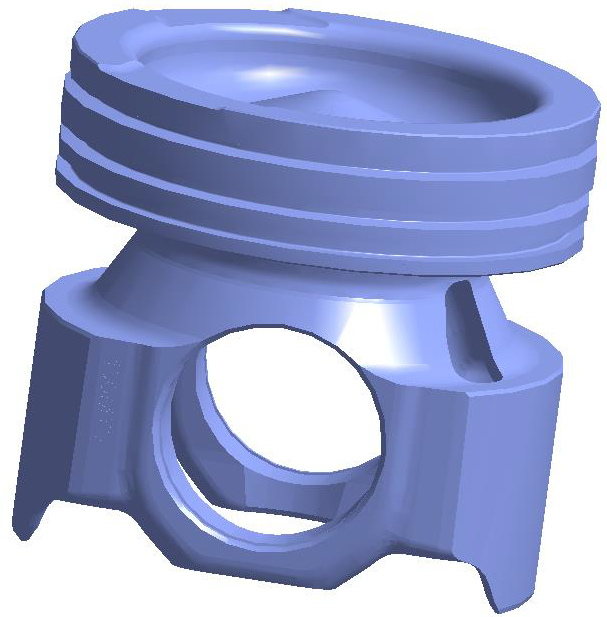SS-T: 4050 Coupled Structural Thermal Analysis
Tutorial Level: Intermediate Create coupled structural thermal analysis in SimSolid for a piston head.
- Purpose
- SimSolid performs meshless
structural analysis that works on full featured parts and assemblies, is
tolerant of geometric imperfections, and runs in seconds to minutes. In this
tutorial, you will do the following:
- Learn to create coupled structural thermal analysis.
- Model Description
- The following model file is needed for this tutorial:
- ThermalStructual.ssp
Open Project
- Start a new SimSolid session.
-
On the main window toolbar, click Open Project
 .
.
- In the Open project file dialog, choose ThermalStructural.ssp
- Click OK.
Create Thermal Analysis
In the main window toolbar, click .
The new analysis appears in the Project Tree as
a Thermal branch.
Apply Convection
- In the Project Tree, click on a Thermal analysis branch to open the Analysis Workbench.
-
On the workbench toolbar, click the
 (Convection) icon.
(Convection) icon.
- In the dialog, verify the Face radio button is selected.
-
Select the faces highlighted in orange in Figure 2.
- For Ambient temperature, enter 420.
- For Convection heat transfer coefficient, enter 500.
- Click OK.
-
Repeat steps 2
through 7 to
create a second thermal convection load, using the faces and values shown in
Figure 3.
Figure 3. 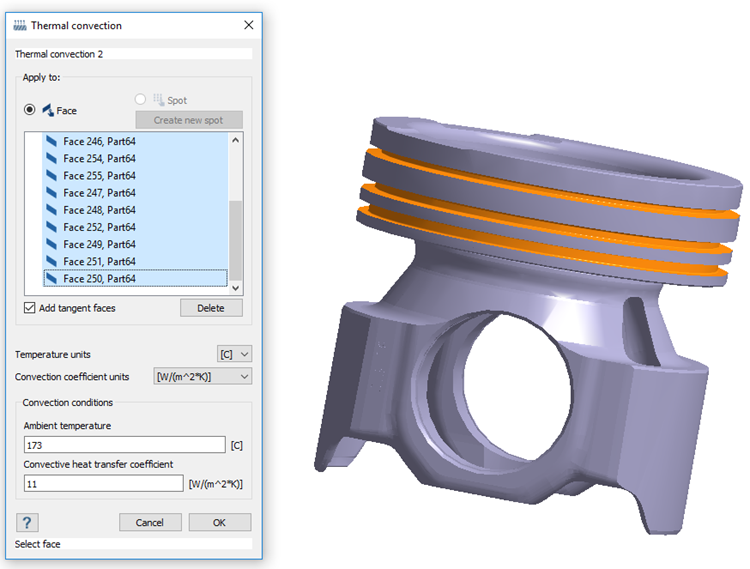
-
Repeat steps 2
through 7 to
create a third thermal convection load, using the faces and values shown in
Figure 4.
Figure 4. 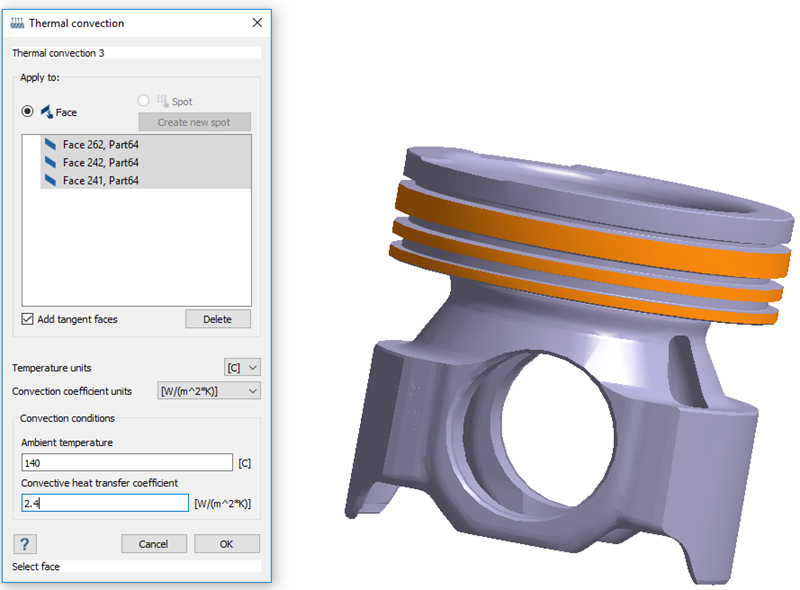
Create Structural Linear Analysis
On the main window toolbar, click
Structural Analysis  ➔ Structural
linear.
➔ Structural
linear.
The new analysis appears in the Project Tree
under Design study 1 and the Analysis Workbench
opens.
Create Immovable Support
-
In the Analysis Workbench, click Immovable
Support
 .
.
- In the dialog, verify the Faces radio button is selected.
-
In the modeling window, select the faces shown in
orange in Figure 5.
Figure 5. 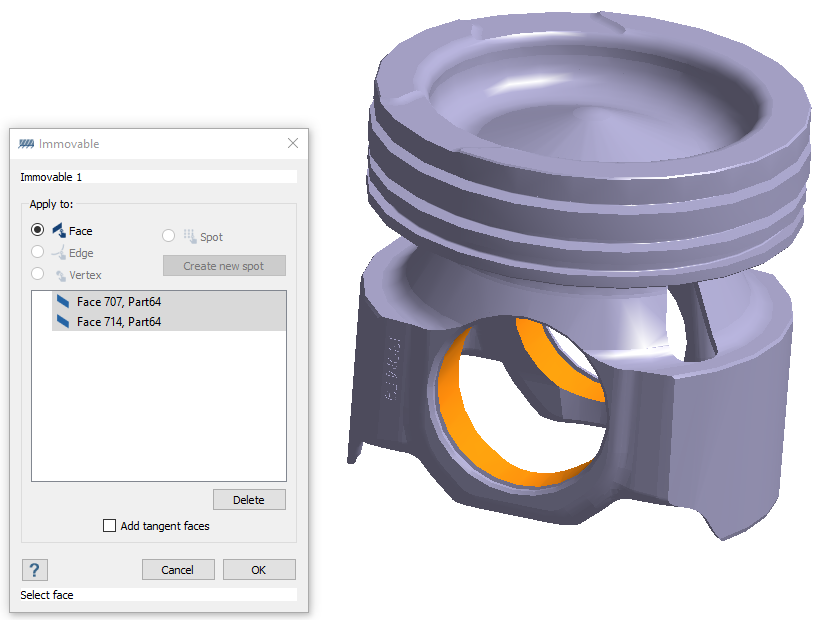
- Click OK.
Link Thermal to Structural
-
In the Analysis Workbench, click
 (Thermal load).
(Thermal load).
- In the dialog, select the Link to thermal analysis results radio button.
- Click OK.
Edit Solution Settings
- Double-click on Solution settings: for Thermal 1.
- In the Solution settings dialog, for Adaptation select Global+Local in the drop-down menu.
- Click OK.
- Right mouse click on solution settings and select Apply to all analyses in the current design study to apply the global+local adaptation to all other analyses in the study.
Run Design Study
Solve all analyses in the design study.
- In the Project Tree, select the Design study 1 branch.
- Click Run All Analyses
- In the Solver Manager, verify all analyses are selected.
- Click Solve.
Review Combined Results
-
On the Structural 1 Analysis workbench toolbar, click
 Results plot.
Results plot.
-
Select Displacement Magnitude.
The Legend window opens and displays the contour plot.
Figure 6. 